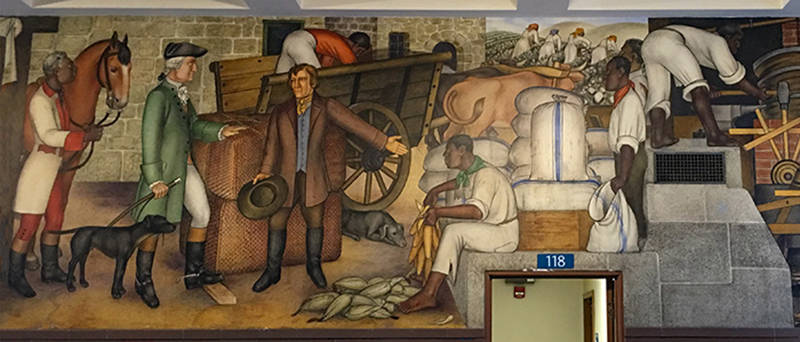A Great Depression-era mural depicting George Washington as a slave owner and promoter of the United States’ genocidal westward expansion is the latest public artwork to draw controversy in San Francisco.
Life of Washington, a 13-panel fresco by Russian-born painter Victor Arnautoff, has greeted visitors to the lobby of George Washington High School in the Outer Richmond district since 1936. Now it’s complicating a nationwide referendum on public monuments to past exploitation.
Two panels of the Works Progress Administration-funded mural are primarily at issue: One shows Washington among his slaves at Mount Vernon, while in another, the country’s first president directs white men with guns westward, over the body of an apparently slain Native American. Artaunoff, a committed communist, intended the artwork as a corrective rebuke to the United States’ origin story.
Opponents of the mural, including the school board president and students, say it offensively shows oppressed minorities in an undignified light. Their criticism echoes activists’ successful call last year to remove “Early Days,” a statue depicting a Native American kneeling beneath a Spanish colonizer, from the Pioneer Monument sculptural group near San Francisco City Hall.
But supporters of the mural, including the George Washington High School Alumni Association and art scholars and critics, argue that Life of Washington clearly critiques, instead of glorifies, colonization and racism. Arnautoff’s “daring murals,” wrote New Deal scholar Gray Brechin, “depict the father of our country as also being the father of a genocide later claimed by the victors as Manifest Destiny.”



